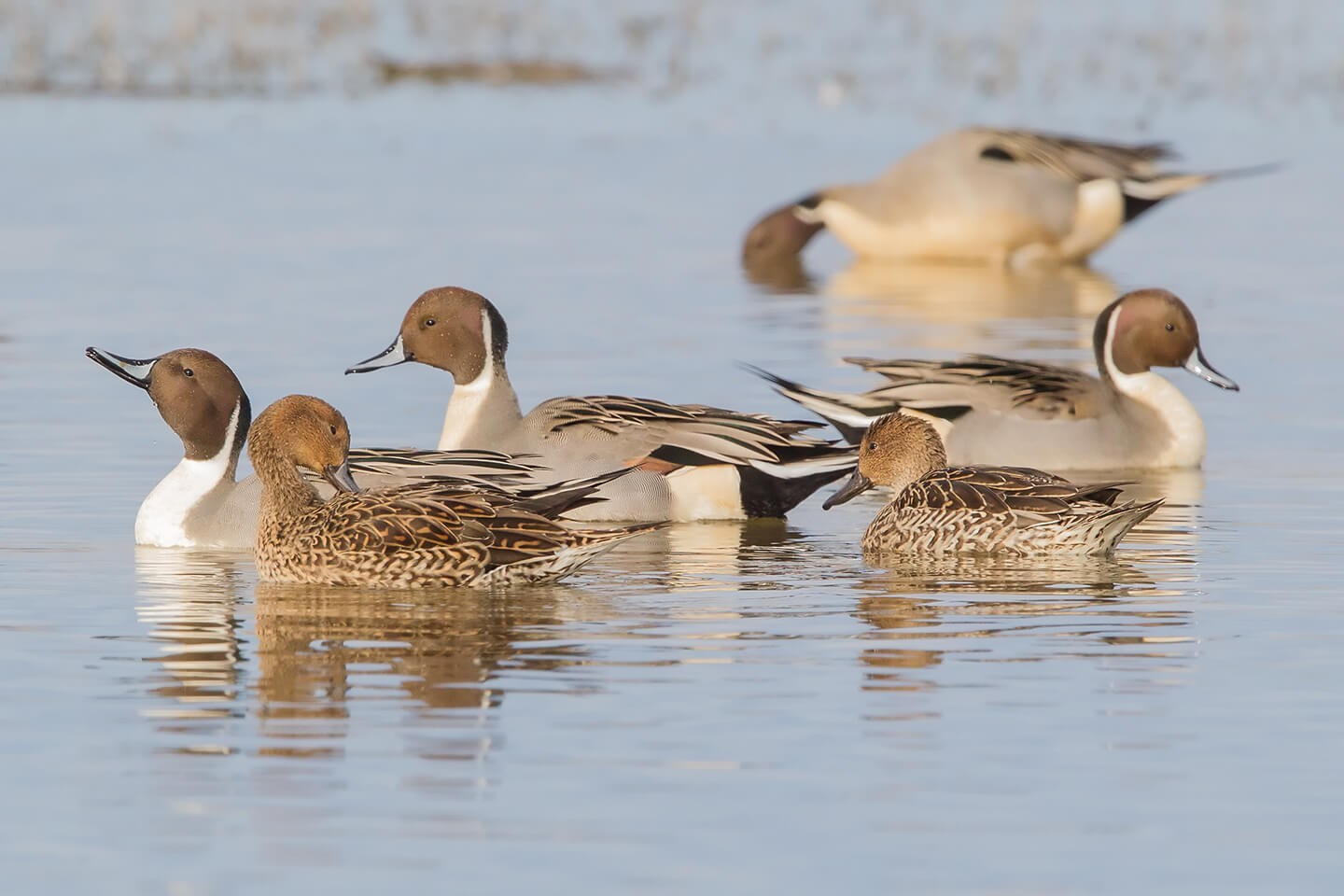As California continues to experience its fourth year of drought conditions, the end of the summer does not signal the end of water management challenges for water resources managers in the Sacramento Valley. As we enter into the fall and winter months, a partnership of water management entities, conservation organizations and California Rice are pursuing numerous options to increase the available habitat for birds that are beginning to arrive in the region. The objective is to provide as much diverse and productive habitat spread throughout the region to help the birds in their annual migration and to avoid avian diseases.

Historically, in non-drought years, there is a heavy reliance on surface water supplies to provide the water needed for Pacific Flyway habitat in the Sacramento Valley. But, the ability of water purveyors to pump this water from the region’s rivers has been curtailed in many places during this dry year. So, currently (and until the curtailments are lifted) these rights cannot be used to divert water for the Pacific Flyway.
Because of this, the partnership of water managers and conservation organizations, which include Audubon California, The Nature Conservancy, Ducks Unlimited, California Waterfowl Association, Point Blue, California Rice Commission, Northern California Water Association and others, are exploring creative alternatives to maximize available habitat, without knowing how much water will be available this fall.
The partners are working on three general strategies to enhance Pacific Flyway habitat this winter.
Habitat Incentive Actions
The partners are working with the Department of Fish and Wildlife (DFW) on a suite of creative incentive programs that can provide habitat whether or not it rains this winter. DFW is attempting to identify available funding for these efforts.
- Ricelands – This program would incentivize landowners to pump small amounts of groundwater to flood rice fields and provide over 5,300 acres of habitat.
- Habitat Enhancement and Stormwater Retention – This program would incentivize landowners to implement habitat-friendly rice straw management actions and prepare their fields to take advantage of any stormwater or diverted surface water that they may receive if curtailments are lifted. This program could provide up to 27,000 acres of habitat.
- BirdReturns Habitat – This established program, which is a collaboration between the Nature Conservancy and California Rice Commission, incentivizes landowners to provide temporary habitat during critical times in the fall and spring for birds utilizing the Flyway. The funding being sought for this program would provide over 2,800 acres of early fall habitat.
Maximizing Available Water Supplies
As the water year comes to an end, there is very little water left in system; yet the partners are all working together with the federal and state agencies to explore creative ways to maximize available water supplies and provide flexibility to enhance Flyway habitat. This includes deliveries that individual water suppliers make to the National Wildlife Refuges and Wildlife Management Areas in the region, as well as opportunities to provide rice decomposition water that serves as a critical food source for birds.
Preparing to Lift Curtailments
The partnership of water management entities and conservation organizations has been working with the State Water Resources Control Board (SWRCB) to encourage a process to lift curtailments in a timely manner when there is precipitation or when the demands on the system drop. Last year, the SWRCB did a nice job staying on top of its water supply and demand analysis in the fall, which helped provide much needed water and habitat for the Flyway.
In sum, while we are optimistically hoping that there will be abundant precipitation this fall and winter, it is not practical to assume that the drought is going to end. These diverse and creative efforts will help maximize habitat for the shorebirds, waterfowl, raptors and other species dependent upon the Pacific Flyway in the Sacramento Valley. As you drive around the Sacramento Valley this Fall, be assured that any water standing in a field is water that is being carefully managed to provide valuable habitat that will benefit birds during this challenging year.



